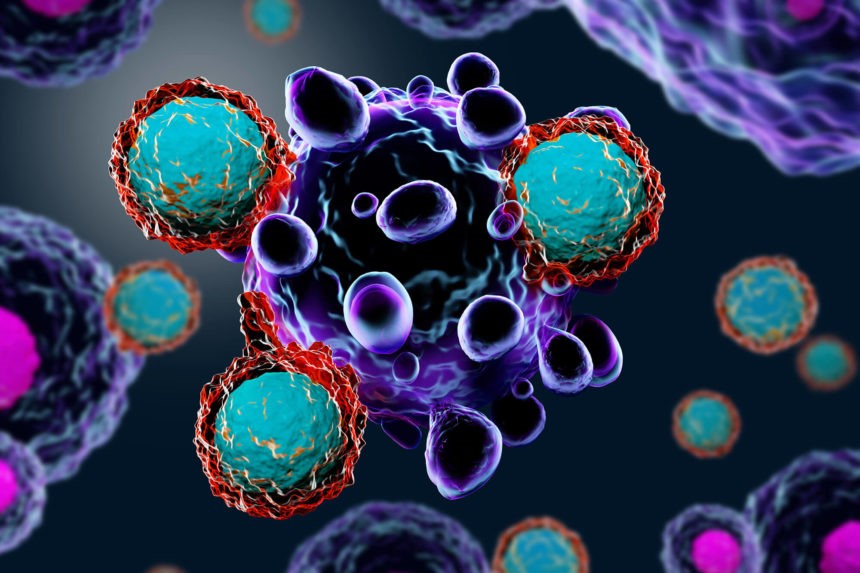
Brain tumours: CAR-T offers new hope for treating inoperable gliomas
Using CAR-T: a combination of gene and drug therapy inhibits cancer growth. The study by researchers at the Pediatric Hospital of the Holy See published in the journal Neuro-Oncology
New hope from CAR-T for children’s brain tumours: a combination of gene and drug therapy with powerful anti-tumour action inhibits the growth of ‘diffuse midline gliomas’
These are very aggressive brain tumours that are inoperable and, until now, have had no effective treatment.
The new therapy was developed by researchers at the Bambino Gesù Children’s Hospital in collaboration with the Istituto Superiore di Sanità, Policlinico Gemelli and the Institute of Cancer Research in London. The results of the laboratory tests pave the way for future human trials.
The study was published in the scientific journal Neuro-Oncology.
MIDLINE GLIOMAS
Diffuse midline gliomas are tumours that are typical of paediatric age and are mostly due to a mutation in the H3K27M protein.
They develop in the midline structures of the brain, particularly in the pons, the part of the brainstem that regulates vital functions such as breathing and cardiac activity.
These tumours are very aggressive, tend to spread rapidly and infiltrate deeply.
Because of their location, they cannot be surgically removed.
In Italy, about 20-25 cases of gliomas localised in the pons are diagnosed in children, with a peak incidence between 5 and 10 years of age.
Average survival is very low (9-12 months) and less than 5% of children survive 5 years after diagnosis, despite radio- and chemotherapy treatments.
Because of the heterogeneity of gliomas and the difficulty of drugs in getting through the barrier protecting brain tissue to the tumour, it has not been possible to find an effective cure to date.
THE ONCOHAEMATOLOGY STUDY ON CAR-T
The study coordinated by the Research Area of Oncohaematology of the Bambino Gesù, directed by Prof. Franco Locatelli, was conducted in the laboratory starting from the tumour cells of glioma patients undergoing biopsy.
Investigations on tissue, on cells derived from the tumours and on animal models have made it possible to identify a never-before-tested anti-tumour therapy, based on the use of an experimental drug (Linsitinib) in combination with genetically modified T lymphocytes (CAR-T cells).
The drug, which was identified through pharmacological screening, is a specific inhibitor of the IGF1R protein (a molecule present on the membrane of tumour cells) capable of exerting a direct anti-tumour action on diffuse midline glioma cells.
CAR-Ts have been programmed to recognise – and kill – tumour cells by attacking a protein expressed on their surface: the GD2 antigen (GD2-CAR-T)
The new combination therapy, which was tested in the laboratory on several models of midline glioma, proved capable of inhibiting tumour growth.
Researchers have also shown that the combination produces a more effective anti-tumour effect than the two treatments used separately: the drug amplifies the activity of CAR-T cells, and it is hypothesised that the CAR-Ts are able to ‘fight their way’ past the protective blood-brain barrier.
The Bambino Gesù research was supported by Children with Cancer UK, AIRC, Ministry of Health, AIFA, Mia Neri Foundation, Heal Foundation, DIPG Collaborative and Veronesi Foundation.
CAR-T-RELATED THERAPEUTIC PERSPECTIVES
Diffuse midline gliomas are still orphaned by treatment, but “the preliminary results of the study are encouraging” explains Prof. Franco Locatelli Director of Experimental and Precision Medicine at Bambino Gesù.
“The new treatment strategy has provided promising pre-clinical results and could represent the first step towards successfully treating a proportion of patients affected by this terrible form of cancer”.
As the researchers point out, before moving on to human trials, the best ways of delivering the drug and CAR-T to the tumour site will have to be developed, and the therapeutic mix will have to be tested on more complex tumour models that allow the immune and inflammatory response in patients to be anticipated and assessed.
The scientific relevance of the Bambino Gesù study, particularly in terms of the prospects for treatment opened up by the development of the new combined therapy, was also highlighted in a recent editorial published in the journal Neuro Oncology.
Read Also:
Emergency Live Even More…Live: Download The New Free App Of Your Newspaper For IOS And Android
Lymphoma: 10 Alarm Bells Not To Be Underestimated
Non-Hodgkin’s Lymphoma: Symptoms, Diagnosis And Treatment Of A Heterogeneous Group Of Tumours
CAR-T: An Innovative Therapy For Lymphomas
What Is CAR-T And How Does CAR-T Work?


